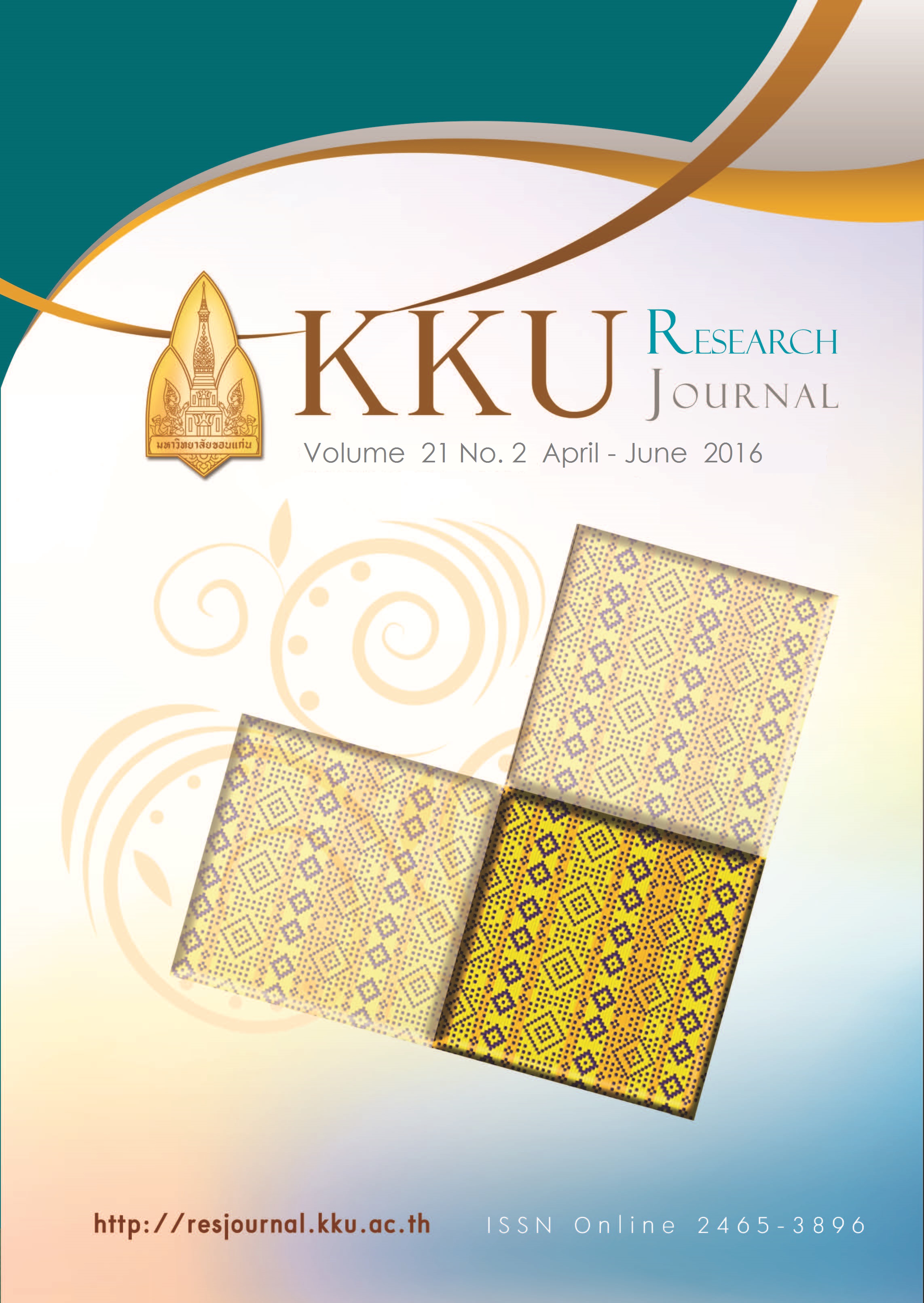Effect of yeast varieties on jamun wine quality
Main Article Content
Abstract
The primary objective of this study was to select the best yeast variety for the production of Jamun wine through chemical properties analysis, sensory evaluation and comparison with the commercial products and thevstandards of the Industrial Laboratory Center of Cambodia (ILCC). Three selective varieties of yeast including Saccharomyces cerevisiae, Saccharomyces ellipsoideus, and Saccharomyces spp. from supperfoods were used in the production of Jamun wine. The study showed that Saccharomyces cerevisae produced the highest alcohol content and was top scored for all sensory evaluation parameters. The relative preference of the wines based on the three varieties of yeast was 57% for wine produced by Saccharomyces cerevisiae, 23% for Saccharomyces spp. from supper foods, and 20% for Saccharomyces ellipsoideus. The comparison of the wine products with commercial wines showed that alcohol, methanol, ester, and tannin contents were significantly different (P<0.05). Nevertheless, there were no significant differences between total soluble solids, acetic and tartaric acid content. The comparison with the ILCC standards showed that the Jamun wines produced from these yeast varieties are safe for consumption, especially the product produced from the yeast Saccharomyces cerevisae. Therefore, the yeast Saccharomyces cerevisae is regarded as the most appropriate for the production of Jamun fermented wine, which it can be used at household level as well as by small and medium enterprises (SMEs).
Article Details
References
[2] Ayyanar M, Subash-Babu P. Syzygium cumini (L.) Skeels: A review of its phytochemical
constituents and traditional uses. Asian Pacific journal of tropical biomedicine. 2012;2(3):240-6.
[3] Joshi SG. Medicinal plants: Oxford and IBH publishing; 2000.192 KKU Res. J. 2016; 21(2)
[4] Sehwag S, Das M. Nutritive, therapeutic and processing aspects of Jamun, Syzygium cuminii (L.) Skeels-An overview. Indian Journal of Natural Products and Resources. 2014;5(4):295-307.
[5] Mohanty S, Ray P, Swain M, Ray R. Fermentation of cashew (Anacardium occidentale L.) “apple” into wine. Journal of Food Processing and Preservation. 2006;30(3):314-22.
[6] Fleet GH. Yeast interactions and wine flavour. Int J Food Microbiol. 2003;86(1):11-22.
[7] Sacchi KL, Bisson LF, Adams DO. A review of the effect of winemaking techniques on phenolic extraction in red wines. American Journal of Enology and Viticulture. 2005;56(3):197-206.
[8] Horowitz W, Latimer G. Official methods of analysis of AOAC
International. Gaithersburg, Md AOAC International. 2006.
[9] Ough CS, Amerine MA. Methods for analysis of musts and wines. 1988.
[10] Nagodawithana TW, Trivedi NB. Yeast selection for baking. Yeast Strain Selection. 1990:139-84.
[11] Battcock M. Fermented fruits and vegetables: a global perspective: Food & Agriculture Org.; 1998.
[12] Saigal D, Ray RC, Ward O.
Microbiology of wine making: current knowledge and future trends. Microbial biotechnology in horticulture, Volume 3. 2008:1-33.
[13] Belmares R, Contreras-Esquivel JC, Rodrı́guez-Herrera R, Coronel ARr, Aguilar CN. Microbial production of tannase: an enzyme with potential use in food industry. LWT - Food Science and Technology. 2004 12//;37(8):857-64. (14) Lekha P, Lonsane B. Production and application of tannin acyl
hydrolase: state of the art. Adv Appl Microbiol. 1997;44:216-60.


